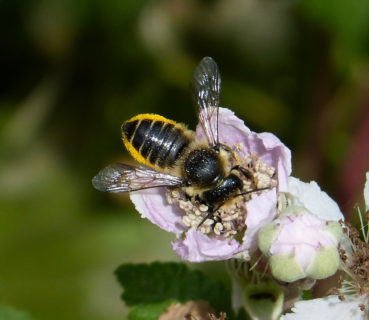I Am a Pollinator Pal
The Houston Zoo is well known for its efforts in saving wildlife. Sea turtles, Houston Toads, Attwater’s Prairie Chickens and even butterflies! Yearly, staff and volunteers participate in Monarch tagging. The butterflies are then reported to Monarch Watch when found so their migration can be tracked.
Some of our staff have a special interest in pollinators and are our Staff Pollinator Pals. Through 2019, we will be spotlighting some of these people so you can get to know them and learn about how they are helping pollinators and how you can help too.
Our first Staff Pollinator Pal is Karen Sprague. In her daily role here at the zoo she is a part of our Water Quality Team. As an LSS (Life Support System) Water Quality Technician she makes sure the water systems our aquatic animals live in are healthy for them. If you have ever had an aquarium, you know it may sound like an easy task, but it is not. Many things are tracked such as nitrites, nitrates and chlorine among others. It is a job that entails a lot of testing and care of the water as well as the filtration systems it runs through.

Karen has been at the zoo for the better part of 11 years. She is a native Texan but has lived in California, Oregon, Utah, Tennessee and Maryland! She is really happy to be back in Texas because she loves the amazing birds, bugs, and herps you see here.
She has been a self-proclaimed “biology nerd” since she was a little girl. Her love of animals started with dinosaurs, then sharks, then snakes and lizards and finally anything that lived in water. She has also always been drawn to insects and spiders. Here is part of what she said about her love for pollinators. “When I took invertebrate zoology and entomology in college, it opened up a whole new world of weird and wonderful critters and I have been fascinated with all of them (especially arthropods) ever since. I started gardening to attract various bee species about 20 years ago, which of course sparked a big interest in plants and their complex relationships with pollinators of all kinds. Learning about how each species is connected to another and how all life is woven together is a never-ending joy for me. And the more I know, the more I understand the dire need to protect it all.”
Her favorite pollinators? Native bees! There are around 4,000 species of bee native to the US. From bumblebees that buzz-pollinate stubborn tomato flowers, to the tiny leaf-cutter bee that fashions a nest out of perfect half circles of leaves or flower petals that she cuts herself. That tiny leaf-cutter bee alone is so important to us! That is the species that pollinates alfalfa which is a food source for dairy cows. If The dairy cows lose their food guess what happens? We would lose our dairy products. No milk, ice cream or cheese!

What is Karen doing to help save pollinators in the wild? Her love of bees prompted her to create a Pollinator SOS at the zoo in 2010 to raise public awareness regarding the importance of these beneficial insects. This was coupled with a project funded by the Houston Zoo’s Staff Conservation Project to build and install bee boxes and signage throughout the zoo. At home she plants wildflowers and other pollinator friendly plants and leans strongly towards native plants. She says no plot is too small. Any patch of wildflowers or native shrubs in your yard is a welcome sight for any pollinator.
When asked what she would like people to know about pollinators, this was her reply. “Pollinators give us fruits, veggies, coffee, chocolate, vanilla, almonds, tequila, spices, etc. – all the variety we need in our diets! Not to mention that 75% of the worlds flowering plants depend on pollination to survive and those plants support the world’s land animals both directly and indirectly. Earth would be quite the desolate place without pollinators. So, pick out a plot, swear off all pesticides and start gardening! Pick out some plants you like (you can’t go wrong with sunflowers) and watch your yard, school, or business landscaping transform into a haven for wildlife. Many native plants bloom all summer but be sure to include plenty of spring and fall bloomers as well. These plants will help support early/late emerging bee species plus our migrating Monarch butterflies.”

Here are some awesome resources for plant selection and purchase:
Houston Audubon: http://www.birdfriendlyhouston.org/get-started/the-basics/native-plants/natives-nursery/
Native American Seed: http://www.seedsource.com/Default.asp
Native Plant Society of Texas, Houston Chapter https://npsot.org/wp/houston/
How can you become a Pollinator Pal like Karen? Bring photos, reports or journals about your garden to the Swap Shop at the Houston Zoo. You will be registered as a Houston Zoo Pollinator Pal along with earning points to spend in the shop! Don’t know about the shop? Click here to learn more.
